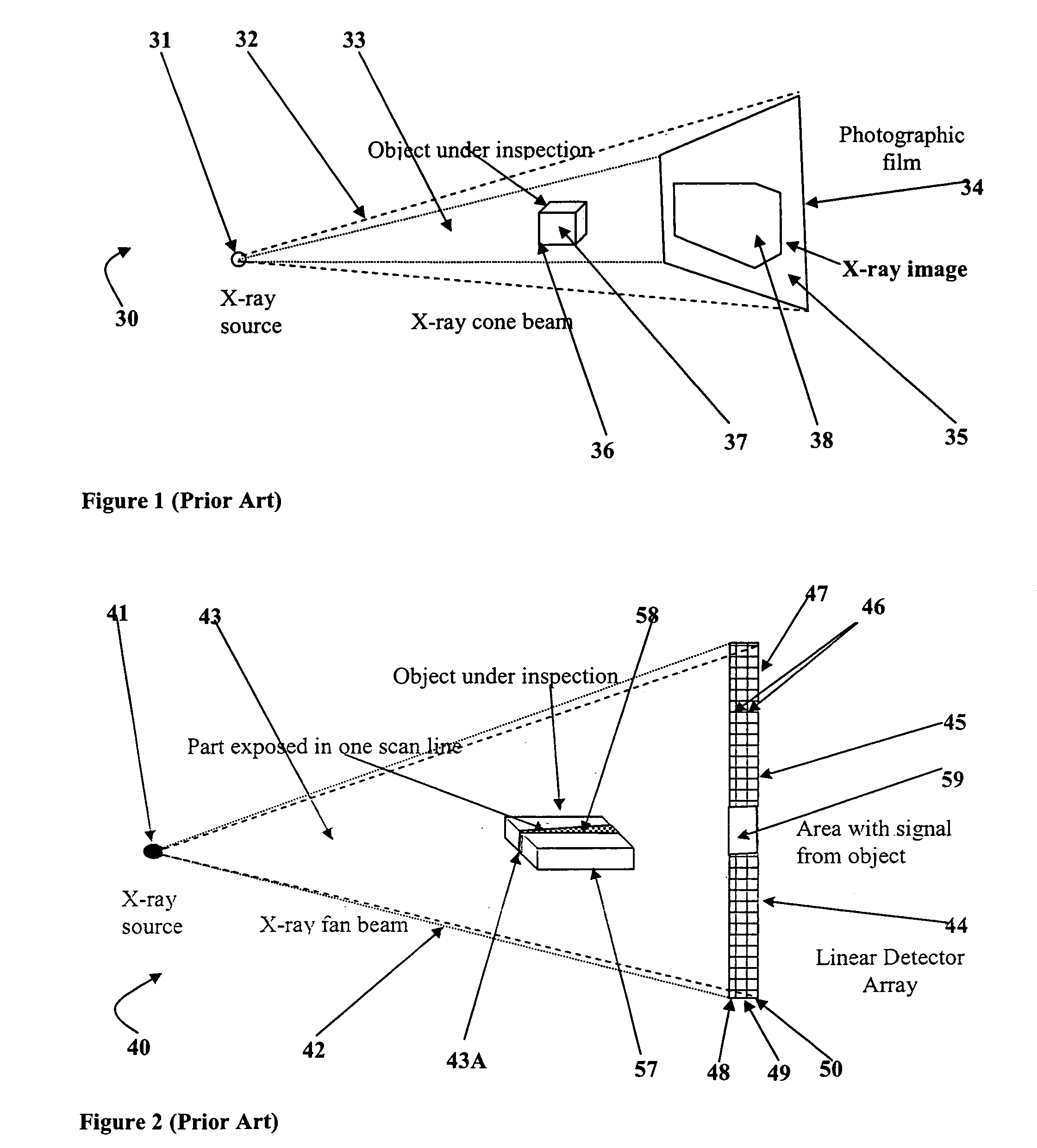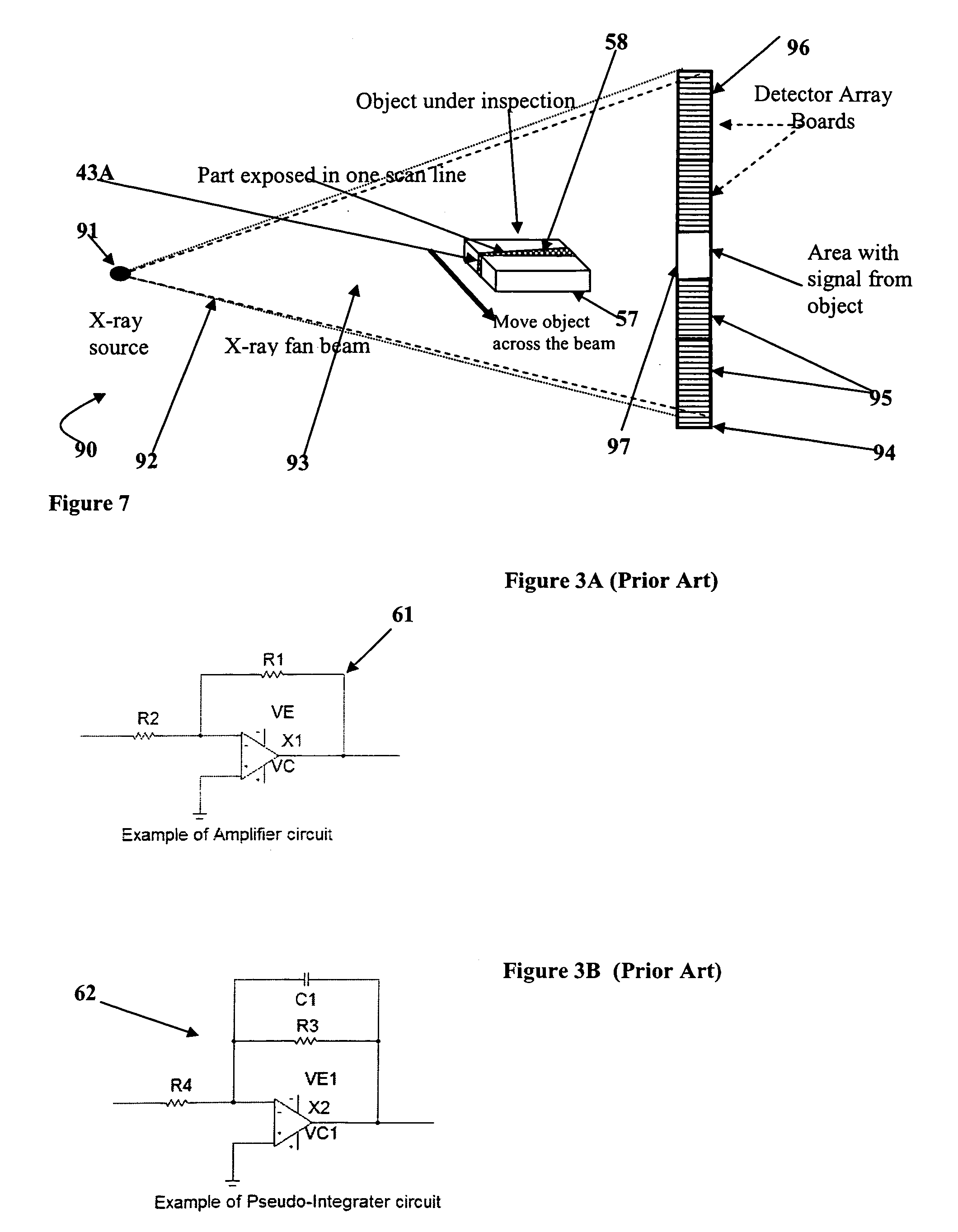Time share digital integration method and apparatus for processing X-ray images
a digital integration and image technology, applied in the field of time-share digital integration methods and apparatuses for processing x-ray images, can solve the problems of short and unnecessarily large and complex electronic signal processing circuitry, etc., to achieve the effect of increasing the data transfer rate of detector array boards, increasing the cost of the board, and increasing the time required for outputting image data
- Summary
- Abstract
- Description
- Claims
- Application Information
AI Technical Summary
Benefits of technology
Problems solved by technology
Method used
Image
Examples
Embodiment Construction
[0066]The structure and function of a Time-Share Digital Integration (TSDI) method and apparatus according to the present invention, and certain novel and advantageous improvements in X-ray radiography systems afforded by the method and apparatus, may be best understood by first reviewing the construction and function of some prior art X-ray radiography systems.
[0067]FIG. 1, shows a basic prior art X-ray transmission radiography system for obtaining images of internal features of human bodies, cargo containers, luggage or the like. As shown in FIG. 1, a typical prior art X-ray radiography system 30 includes a source of X-ray radiation 31 such as an X-ray tube, which produces a generally conically-shaped beam of X-ray radiation 32 that irradiates or illuminates an object space 33 and an image plane 34 located on a side of the object space opposite that of X-ray radiation source 31. At the image plane 34 is located a device for detecting X-ray radiation such as a fluorescent screen, p...
PUM
 Login to View More
Login to View More Abstract
Description
Claims
Application Information
 Login to View More
Login to View More - R&D
- Intellectual Property
- Life Sciences
- Materials
- Tech Scout
- Unparalleled Data Quality
- Higher Quality Content
- 60% Fewer Hallucinations
Browse by: Latest US Patents, China's latest patents, Technical Efficacy Thesaurus, Application Domain, Technology Topic, Popular Technical Reports.
© 2025 PatSnap. All rights reserved.Legal|Privacy policy|Modern Slavery Act Transparency Statement|Sitemap|About US| Contact US: help@patsnap.com



